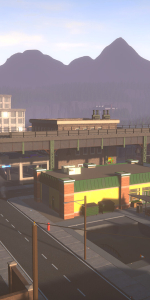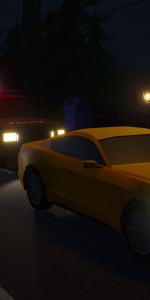



Nothing about “Schedule I” is straightforward. Within minutes of download and your first play session, it becomes clear this isn’t a title chasing mainstream trends. Instead, the game carves a psychological maze—equal parts trippy and deeply atmospheric—leaving even seasoned gamers like myself teetering between fascination and discomfort. Developed by a shadowy indie team, it’s the kind of experience you install out of curiosity and find yourself obsessively deconstructing hours later.
Concept and Theme: Welcome to the Unknown
“Schedule I” defies easy categorization. What, on the surface, launches as a minimalist survival puzzler soon reveals itself as something much stranger. The core premise tasks you with escaping a series of increasingly warped environments influenced by classic anti-establishment fiction and the look of late-night cable television. But what cements “Schedule I” as truly unique is its willingness to blur the line between reality and hallucination, especially as you progress through each chapter.
Players begin in what feels like an abandoned facility—sterile white corridors, flickering monitors, and cryptic audio logs. Exploration quickly pivots into unpredictable territory: environmental puzzles twist into psychological setpieces, and simple objectives become layered with choice-driven consequences. Choices are rarely clear-cut, and the game pushes you to test boundaries that most titles shy away from, especially if you track down community-made mods or experiment with embedded cheats.
Gameplay: Unraveling Order from Chaos
On first playthrough, “Schedule I” feels comparable to titles like “Soma” or “The Stanley Parable,” favoring mind games over reflexes. Core gameplay revolves around scavenging resources, decoding the environment, and surviving bizarre challenges that play with perception and memory. The progression is often non-linear—install this, hack that, decipher cryptic codes—and experimenting with mods or cheats can radically alter how you experience the journey.
Difficulty spikes are deliberately disorienting; dying repeatedly (though never quite in the same way) is part of the loop. The devs lean heavily into unblocked access, encouraging players to seek out alternate routes or hidden admin interfaces if they get stuck. Pro tip: installing certain community-divined mods can unlock entire new sections, some offering free additional story threads, others plunging you deeper into the game’s disturbing lore.
Atmosphere and Presentation
“Schedule I” is a sensory overload in the best way. The visual design leans toward retro PC sharpness crossed with VHS glitch art, blurring areas between tangible and digital. Colors shift violently, lighting morphs at random, and background noise oscillates from soothing to unnerving. All this is intentional; the developers want you unsettled, always wondering if what you see is “real.” Installing on different platforms—including via emulator on Mac or Android—produces subtle changes to shaders and audio filters, giving each playthrough a slightly different flavor.
Though it doesn’t boast blockbuster production values, every asset feels chosen for effect rather than fidelity. Crude polygonal objects cast long, shifting shadows; typed notes flicker with ominous warnings. The sound design warrants special mention—layered, dissonant, and packed with fleeting references for those willing to listen closely. If you’re searching for something unblocked from traditional narrative structure, “Schedule I” delivers.
Replayability and Community Content
There’s a certain addictive quality in the way “Schedule I” refuses to explain itself. Multiple endings, branching mid-game decisions, and mod support invite you to replay, seeking hidden easter eggs or secret passageways. Online forums already brim with fan-made mods and cheats, ranging from subtle visual tweaks to wholesale storyline rewrites. Some mods are designed to make the experience more accessible—think hints or alternate control schemes—while others amplify the game’s challenging nature.
Best of all, the title is frequently updated, and the devs seem open to community feedback, occasionally incorporating suggestions or even highlighting curated mods within the game itself. The result is a living project, both in content and vibe, which keeps the experience feeling fresh whether you play for an hour or an entire weekend.
Performance and Accessibility
Performance on supported platforms is generally stable. Whether you play on PC, Mac via emulator, or try out the stripped-down Android edition, “Schedule I” rarely stutters or crashes. This is a true feat, given how much can change depending on what you install or which mods/cheats are active. Of particular note is the generous system requirements; as long as your machine isn’t decade-old, the download and install process is a breeze, with instant boot times and nearly non-existent load screens.
While the game is, by default, free and unblocked, playing in restricted environments like school or work may occasionally trigger firewall warnings thanks to the game’s irregular networking routines. Still, the community often posts fixes for these hiccups, keeping things accessible where it counts.
How to download Schedule I: Availability & Platform Breakdown
Schedule I is available as a free download from the official site and select indie marketplaces. You can play on Windows directly, with Mac and Android access via emulators. Traditional consoles are unsupported, but cloud-based solutions may work. To install, simply download the launcher and follow on-screen instructions—it’s fast, with minimal required permissions. Minimum specs are a mid-range quad-core processor, 4GB RAM, and integrated graphics. Downloading and enabling mods/cheats is permitted, with guidelines for safety on the forums. In most regions, Schedule I is unblocked, although network restrictions at schools or workplaces may require VPNs or alternative mirrors to play uninterrupted.
Pros
- Inventive use of environmental storytelling
- Strong replayability driven by mods and multiple endings
- Distinctive visual style that amplifies the atmosphere
- Community-driven content integration and frequent updates
- Lightweight download and quick install across devices
- Solid performance even on modest hardware
- Innovative unblocked gameplay features in restrictive environments
Cons
- Occasional obtuse puzzles lacking clear solutions
- Inconsistent narrative pacing, especially mid-game
- Audio design can be overwhelming or distracting for some players



















Leave a comment
Your comment is awaiting moderation. We save your draft here
0 Comments